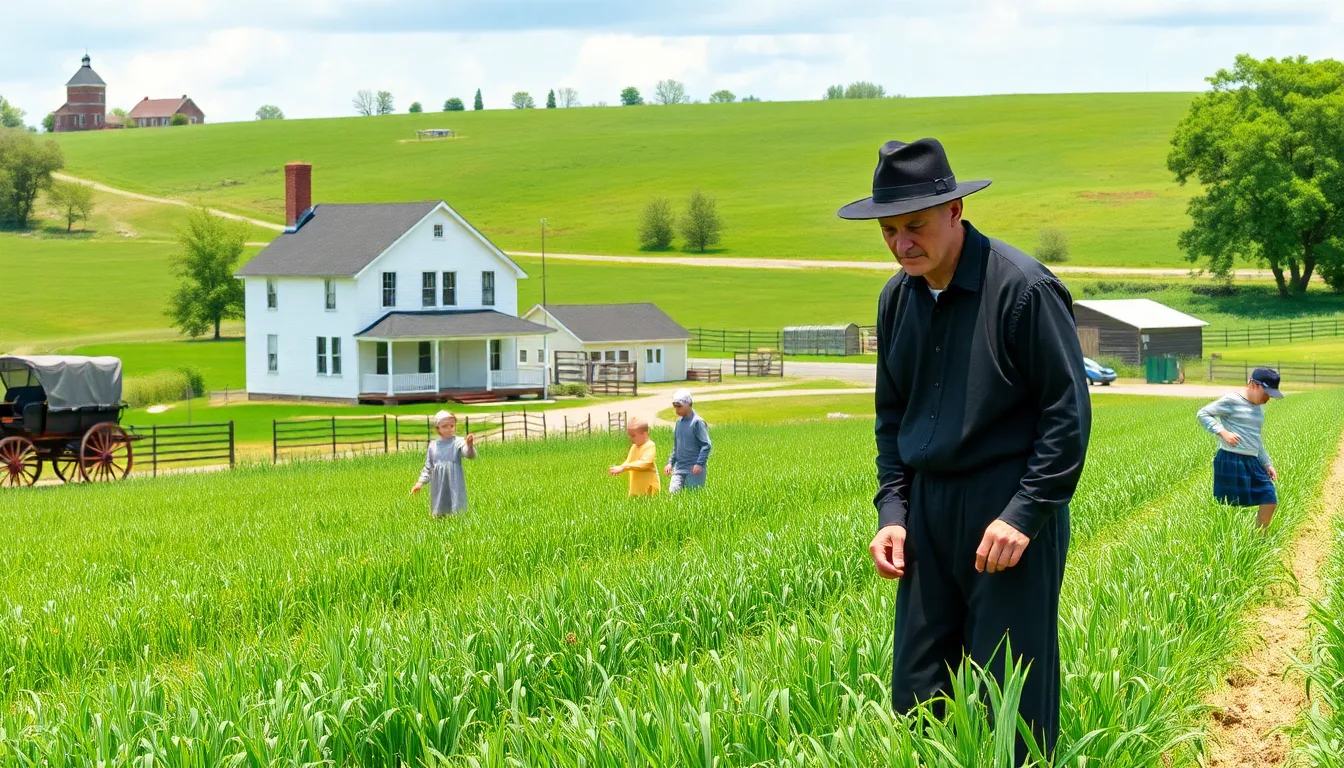The Amish community in Pennsylvania is one of the largest and most well-known in the United States. With its rich traditions and unique way of life, this group has captured the interest of many. But just how many Amish people call Pennsylvania home?
As the heart of Amish culture, Pennsylvania offers a glimpse into their agricultural lifestyle and strong community values. Understanding the size of this population not only highlights their significant presence but also sheds light on their impact on local economies and tourism. Exploring the numbers reveals a fascinating aspect of American diversity and heritage.
Table of Contents
ToggleOverview of Amish Communities
Amish communities in Pennsylvania represent one of the largest populations in the United States, with approximately 81,000 members. These communities are primarily located in Lancaster County, where about half of Pennsylvania’s Amish reside. Other notable areas include Adams, Berks, and Somerset Counties.
Amish individuals adhere to a lifestyle centered around agriculture, craftsmanship, and simple living. They prioritize family, community, and faith, often rejecting modern technology in favor of traditional methods. This choice fosters strong social bonds and promotes sustainable practices within their agricultural systems.
Key characteristics of Amish communities include:
- Social Structure: Community-oriented organizations, like churches and schools, support social cohesion.
- Economic Activity: Many Amish engage in farming, carpentry, and small business operations, contributing significantly to local economies.
- Cultural Practices: The Amish uphold distinctive dress codes, dialects (such as Pennsylvania Dutch), and customs that reflect their beliefs and history.
Community size and practices vary, with some families residing in large clusters while others might be more dispersed. Such diversity enriches Pennsylvania’s cultural landscape, emphasizing the importance of the Amish in regional identity and American heritage.
Population Statistics

The Amish community in Pennsylvania boasts a substantial population, reflecting its historical roots and ongoing growth in the region. Understanding the statistical landscape reveals insights into their community structure and demographic trends.
Historical Context
The Amish settlement in Pennsylvania dates back to the early 18th century. German immigrants, including the Amish, began to arrive in the late 1600s, drawn by freedom of religion and the promise of land. By the 1800s, significant Amish populations established in Lancaster County, creating a foundation for their traditions and practices. The historical migration patterns shaped the community’s density, fostering an environment where cultural practices thrived.
Current Estimates
Current estimates place the Amish population in Pennsylvania at approximately 81,000 members, primarily concentrated in Lancaster County. The community has experienced growth due to higher birth rates compared to the general population. The following table illustrates the estimated Amish population across key counties in Pennsylvania:
| County | Estimated Population |
|---|---|
| Lancaster County | 65,000 |
| Adams County | 7,000 |
| Somerset County | 4,500 |
| Berks County | 2,500 |
| Mifflin County | 2,000 |
These figures highlight how Pennsylvania remains a central hub for the Amish, not only influencing local economies but also enriching the state’s cultural heritage. The community’s preference for rural living and farming contributes significantly to their population distribution across these counties.
Reasons for Settlement in Pennsylvania
The Amish community’s settlement in Pennsylvania stems from various historical and cultural factors. These influences highlight the importance of the state within the broader context of Amish history and identity.
Historical Migration Patterns
Historical migration patterns illustrate how the Amish community established roots in Pennsylvania. Early 18th-century German immigrants sought religious freedom and land, leading to significant migrations. By the 1800s, many families settled in Lancaster County, drawn by fertile farmland and a welcoming environment. Over time, these migrations resulted in a concentration of Amish populations across several counties, including Adams, Somerset, Berks, and Mifflin. Current growth patterns indicate ongoing migrations, as families expand into neighboring areas while maintaining strong community ties.
Attractiveness of Pennsylvania
Pennsylvania’s attractiveness lies in its combination of agricultural opportunities, community support, and cultural preservation. The state offers ideal farming conditions, abundant natural resources, and a strong network of Amish-friendly markets. Safe, rural environments contribute to a peaceful lifestyle aligned with Amish values. Additionally, existing communities provide social and religious support, further encouraging new settlers. This blend of prospects solidifies Pennsylvania’s status as a primary settlement area for the Amish, enriching both the community and the state’s cultural landscape.
Community Life and Culture
The Amish community in Pennsylvania showcases vibrant traditions and values that enhance their communal life. Their beliefs and social structures play crucial roles in maintaining their unique identity.
Amish Beliefs and Practices
Amish beliefs center on simplicity, humility, and separation from the modern world. They adhere to a Christian faith, emphasizing community, family, and service. Religious practices include regular church services held bi-weekly in members’ homes and a strong emphasis on forgiveness and community harmony. Specific customs, such as nonviolent conflict resolution and mutual aid during crises, reinforce these beliefs. Their lifestyle often reflects biblical teachings, influencing decisions in areas like technology use and education. The prohibition of certain technologies, including electricity in homes, maintains their commitment to simplicity and community-focused living.
Social Structure and Organization
The Amish social structure is tightly knit, with strong emphasis on family and community ties. Each church district operates independently, forming small communities where members support one another. Elders and ministers lead spiritual guidance, often selected based on their piety and devotion. Schools within the community usually provide education up to the eighth grade, focusing on practical skills and Amish values. Social gatherings, such as barn-raisings and weddings, create opportunities for communal participation and bonding. Organized groups like the Mennonite Disaster Service also exemplify their commitment to helping others, strengthening community resilience and cooperation.
The Amish community in Pennsylvania plays a vital role in the state’s cultural and economic landscape. With a population of around 81,000 primarily in Lancaster County, their presence is a testament to the enduring values of tradition and community. These communities not only contribute to local economies through agriculture and small businesses but also enrich Pennsylvania’s identity through their unique customs and practices. Understanding the Amish population helps appreciate their significant impact on regional diversity and highlights the importance of preserving such rich cultural heritages in America.



